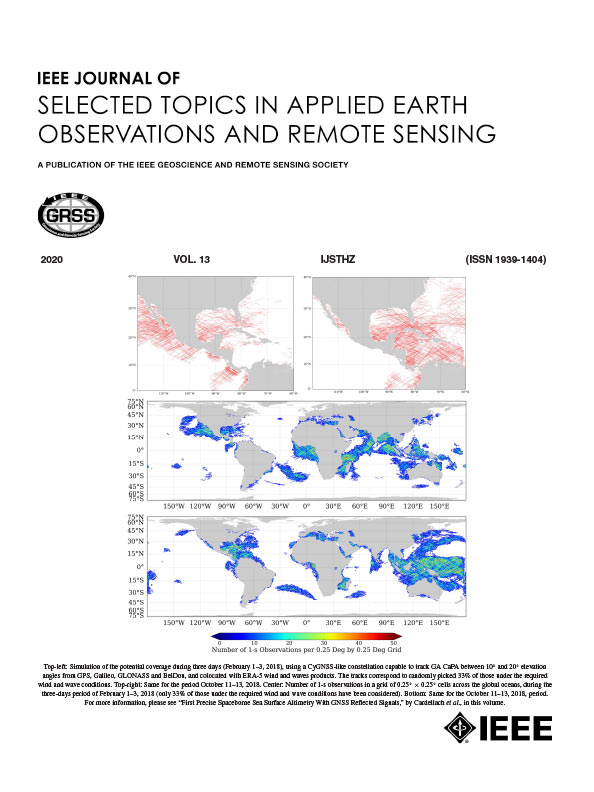Enhancing Maritime Situational Awareness Through End-to-End Onboard Raw Data Analysis
IF 5.3
2区 地球科学
Q1 ENGINEERING, ELECTRICAL & ELECTRONIC
IEEE Journal of Selected Topics in Applied Earth Observations and Remote Sensing
Pub Date : 2025-07-01
DOI:10.1109/JSTARS.2025.3584999
引用次数: 0
Abstract
Satellite-based onboard data processing is crucial for time-sensitive applications requiring timely and efficient rapid response. Advances in edge artificial intelligence are shifting computational power from ground-based centres to on-orbit platforms, transforming the “sensing-communication-decision-feedback” cycle and reducing latency from acquisition to delivery. The current research presents a framework addressing the strict bandwidth, energy, and latency constraints of small satellites, focusing on maritime monitoring. The study contributes three main innovations. First, it investigates the application of deep learning techniques for direct ship detection and classification from raw satellite imagery. By simplifying the onboard processing chain, our approach facilitates direct analyzes without requiring computationally intensive steps such as calibration and ortho-rectification. Second, to address the scarcity of raw satellite data, we introduce two novel datasets, VDS2Raw and VDV2Raw, which are derived from raw data from Sentinel-2 and Vegetation and Environment Monitoring New Micro Satellite (VEN通过端到端机载原始数据分析增强海上态势感知
基于卫星的机载数据处理对于需要及时有效快速响应的时间敏感应用至关重要。边缘人工智能的进步正在将计算能力从地面中心转移到在轨平台,改变“感知-通信-决策反馈”周期,并减少从获取到交付的延迟。目前的研究提出了一个框架,解决了小卫星严格的带宽、能量和延迟限制,重点是海上监测。这项研究贡献了三个主要创新。首先,它研究了深度学习技术在原始卫星图像中直接船舶检测和分类的应用。通过简化板载处理链,我们的方法便于直接分析,而不需要计算密集的步骤,如校准和正交校正。其次,为了解决卫星原始数据的稀缺性问题,我们引入了两个新的数据集VDS2Raw和VDV2Raw,它们分别来自哨兵-2和植被与环境监测新微卫星(VEN $\mu$S)任务的原始数据,并丰富了自动识别系统记录。第三,我们通过统计分析和基于特征的分析,在两个数据集上验证了任务的最佳单波段和多波段组合。总之,我们通过在类似立方体卫星的硬件上进行概念验证,证明了所提出方法的可行性,证实了该模型在基于卫星的海上监测方面的潜力。
本文章由计算机程序翻译,如有差异,请以英文原文为准。
求助全文
约1分钟内获得全文
求助全文
来源期刊
CiteScore
9.30
自引率
10.90%
发文量
563
审稿时长
4.7 months
期刊介绍:
The IEEE Journal of Selected Topics in Applied Earth Observations and Remote Sensing addresses the growing field of applications in Earth observations and remote sensing, and also provides a venue for the rapidly expanding special issues that are being sponsored by the IEEE Geosciences and Remote Sensing Society. The journal draws upon the experience of the highly successful “IEEE Transactions on Geoscience and Remote Sensing” and provide a complementary medium for the wide range of topics in applied earth observations. The ‘Applications’ areas encompasses the societal benefit areas of the Global Earth Observations Systems of Systems (GEOSS) program. Through deliberations over two years, ministers from 50 countries agreed to identify nine areas where Earth observation could positively impact the quality of life and health of their respective countries. Some of these are areas not traditionally addressed in the IEEE context. These include biodiversity, health and climate. Yet it is the skill sets of IEEE members, in areas such as observations, communications, computers, signal processing, standards and ocean engineering, that form the technical underpinnings of GEOSS. Thus, the Journal attracts a broad range of interests that serves both present members in new ways and expands the IEEE visibility into new areas.

 求助内容:
求助内容: 应助结果提醒方式:
应助结果提醒方式:


